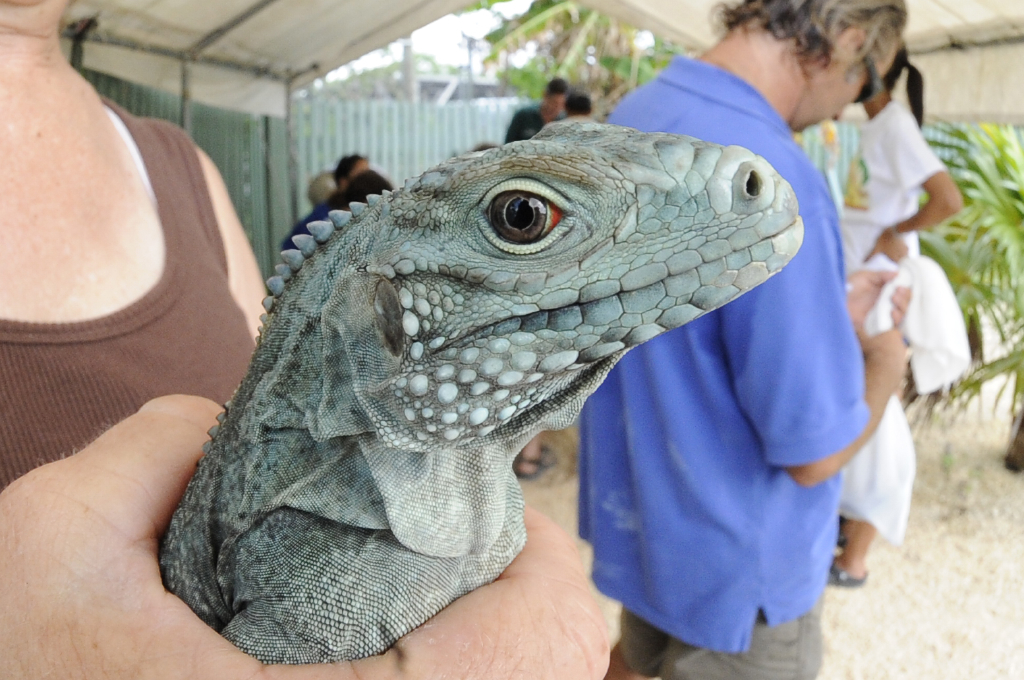
Grand Cayman Blue Iguana Crawls Back from Extinction

The Grand Cayman blue iguana, once on the brink of extinction, has nearly completely recovered in the wild, according to the Wildlife Conservation Society's (WCS) Bronx Zoo.
While thousands of species worldwide are threatened with extinction, the Grand Cayman blue iguana success story is a rarity in conservation, according to the WCS. Coordinated by the National Trust for the Cayman Islands, the Blue Iguana Recovery Program — a consortium of local and international partners — has successfully released more than 500 captive-bred reptiles since the program began in 2002, when the wild population of iguanas numbered less than two dozen.
"For the past several years, we've succeeded in adding hundreds of animals to the wild population, all of which receive a health screening before release," said Paul Calle of the Bronx Zoo.
The Blue Iguana Recovery Program expects to reach their goal of 1,000 iguanas in managed protected areas in the wild in a few years, said Fred Burton, director of the program.
"After that, we will monitor the iguanas to make sure they are reproducing in the numbers needed to maintain the wild population," Burton said. "If we get positive results, we will have succeeded."
The Grand Cayman blue iguana is the largest native species of its namesake island. The reptilesgrow to more than 5 feet (1.5 meters) in length and sometimes weigh more than 25 pounds (11 kilograms).
The iguana formerly ranged over most of the island's coastal areas and the dry shrub lands of the interior before habitat destruction, car-related deaths and dogs and cats drove them toward extinction. The entire island's wild population in 2002 was estimated at only 10 to 25 blue iguanas.
Sign up for the Live Science daily newsletter now
Get the world’s most fascinating discoveries delivered straight to your inbox.

Recovery efforts to save the Grand Cayman blue iguana have mostly centered on the Salina Reserve, a 625-acre (2.5 square kilometer) nature reserve located on the eastern side of the island. After being hatched and raised for a year or two in a captive breeding facility, each iguana receives a complete health assessment before release.
This year, the recovery program is releasing iguanas into a new protected area, the Colliers Wilderness Reserve, established last year and managed by the National Trust.










